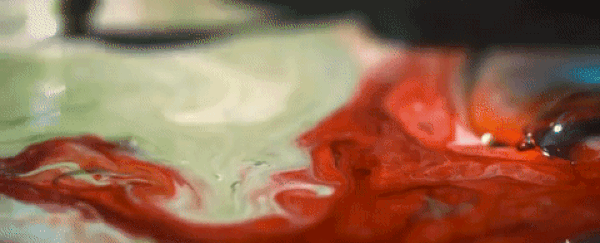As a grown adult, bubbles probably don't amuse you all that much anymore. Except when they're used by mantis shrimps to shoot deadly shock waves at unsuspecting snails, and then they're the best. But what about the bubble's bizarro cousin, the antibubble?
While regular bubbles are formed from a sphere of gas surrounded by thin film of liquid, a droplet of liquid surrounded by a thin film of gas forms an antibubble, and these things have got some pretty fascinating properties.
They can ricochet off other objects just like tiny billiard balls; they refract light differently from regular bubbles, which gives them a bright, glossy appearance; and unlike soap bubbles that can last several minutes, antibubbles can only hold their shape for a few seconds.
As the episode of Physics girl above demonstrates, you can actually make your own antibubbles at home, using water, dish soap, and food colouring. If you get your bottle at just the right angle, you can squeeze water into a dish soap mixture and watch as antibubbles form across the surface, sink, and explode in a kind of vortex shape.
And really, that's the complicated way of making antibubbles - you make them every time you wash your hands with soap, but you probably never noticed, because they pop way easier than regular bubbles.
To understand the physics of how bubbles and antibubbles pop, you need to understand what keeps them together first. As the video explains, there's actually a really interesting molecular structure responsible for creating the perfectly spherical soap bubbles we lost our minds over as kids.
The reason is that each soap molecule has a hydrophilic (water-attracting) head, and a hydrophobic (water-repelling) tail.
In a soap bubble, the soap molecules all line up perfectly so that the hydrophilic heads are lined up with the water.
Their slight electric charge means that the soap molecules on one surface of the film repel those on the other surface, which helps to ensure that the film doesn't collapse in on itself. (There's a handy diagram in the video above to make more easy to visualise.)
This film eventually evaporates, and that's when your bubble pops.
When it comes to antibubbles, pretty much everything is in reverse. I'll let Diana explain that to you in the Physics Girl episode above, and in case you're wondering how to do the amazing milk, food colouring, and dish soap experiment from the beginning, we've got you covered.
Because, just look at that:
